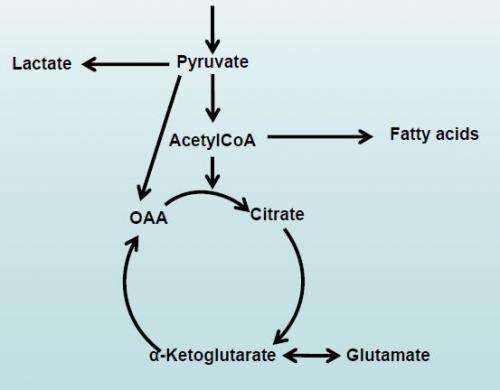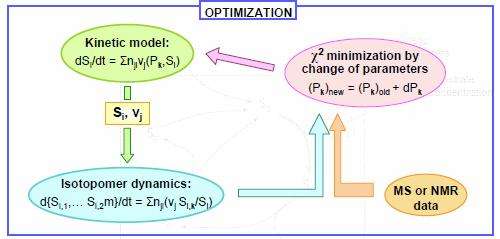New factor to control oncogene-induced senescence

An article published on the journal Nature describes the major role that Pyruvate dehydrogenase (PDH) —an enzyme of cellular energy metabolism— plays in the regulation of the cellular senescence induced by the oncogene BRAF, which usually appears mutated in melanoma and other cancers.
The researchers who participated in this international research are: Marta Cascante and Vitaly Selivanov, from the Department of Biochemistry and Molecular Biology of the Faculty of Biology of the UB and the Institute of Biomedicine of the UB (IBUB), affiliated to the campus of International excellence Barcelona Knowledge Campus (BKC); Liang Zheng and Eyal Gottlieb, from Beatson Institute for Cancer Research (Scotland), and Joanna Kaplon and Daniel S. Peeper, from the Netherlands Cancer Institute, among other experts from international renowned research groups.
Cellular senescence: a 'brake' to cell division
Cellular senescence, formally described more than four decades ago by Paul Moorhead and Leonard Hayflick, is a tumour suppression mechanism which limits cell's ability to proliferate. This process works as a 'brake' for tumour genesis and can be an answer to several factors (oncogene, oxidative stress, telomere alterations, etc.)
Professor Marta Cascante, head of the Consolidated Research Group on Integrative Systems Biology, Metabolomics and Cancer of the UB honoured with the ICREA Academia Award 2010, explains that "as a response to an oncogene mutation, cell can activate its protection mechanisms and get into a phase so-called 'oncogene-induced senescence' which acts as a key tumour suppressive mechanism. In this phase, cell stops dividing and is in a premalignant state. However, when this 'brake' does not work correctly, the progression to a malignant state may happen and a tumour may appear. To identify which mechanisms regulate this cell phase is crucial to avoid tumour formation or reverse this process and to define future therapies".

PDH, a crucial mediator of oncogene-induced senescence
PDH is an enzyme complex located at the mitochondrial matrix regulated by phosphorylation (catalysed by PDH-inhibitory kinase) and dephosphorylation (catalysed by PDP2-activating phosphatase). Researchers prove that PDH is a crucial mediator of senescence induced by BRAF, an oncogene commonly mutated in melanoma and other cancers.
Authors affirm that BRAF-induced senescence is simultaneously accompanied by PDK1 inhibition and PDP2 activation. By means of these mechanisms, which converge on PDH activation, mitochondrial metabolism in BRAF-induced senescence is increased. The study also proves that senescence abrogation coincided with reversion of these processes.
According to researchers, PDK1 inhibition seems to cause induction of cellular senescence and regression of established melanomas. The results obtained from the inoculation of melanoma cell lines into immunocompromised mice prove almost complete tumour outgrowth prevention. And most importantly, PDK1 depletion in established melanomas leads to tumour regression.
The scientific team concludes that the activation of mitochondrial metabolism may contribute to reactive oxygen species (ROS) production, which play a relevant signalling function in cell metabolism and are involved in cellular senescence, telomere shortening and genome damage. Doctor Vitaly Selivanov, expert on metabolomics modelling and co-author of the article, explains that they got these results thanks to "the development of mathematic models which enabled to carry out a quantitative research of metabolic fluxes. Without this powerful mathematical analysis, it would be difficult to deeply understand what happens in cell metabolic reprogramming which causes tumour growth".
The Consolidated Research Group on Integrative Systems Biology, Metabolomics and Cancer is an international renowned team led by Professor Marta Cascante. Their research on molecular mechanisms of reprogramming in multifactorial disorders (cancer, diabetes, chronic obstructive pulmonary disease, etc.) is pioneer. The group belongs to the Reference Network of R+D+i on Theoretical and Computational Chemistry (XRQTC) of Catalonia. In the field of cancer, the group studies the molecular mechanisms involved in metabolic reprogramming which enable an uncontrolled cell proliferation. Marta Cascante's group collaborates with some research group from IDIBAPS and Hospital Clínic of Barcelona on this area of knowledge.
More information: www.nature.com/nature/journal/ … ull/nature12154.html













